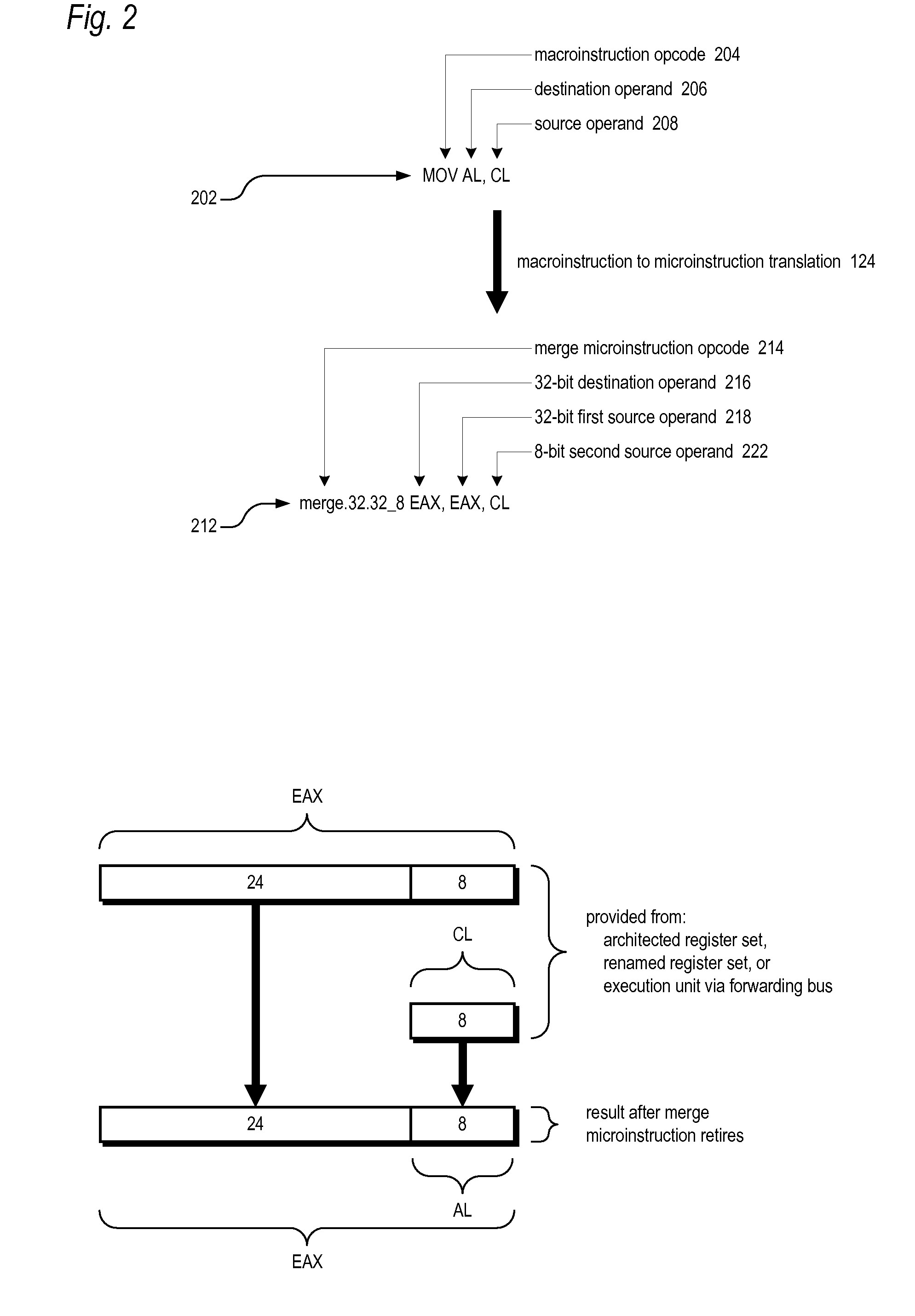Merge microinstruction for minimizing source dependencies in out-of-order execution microprocessor with variable data size macroarchitecture
- Summary
- Abstract
- Description
- Claims
- Application Information
AI Technical Summary
Benefits of technology
Problems solved by technology
Method used
Image
Examples
Embodiment Construction
[0035]The present disclosure should be understood in light of the following definitions.
[0036]An “out-of-order execution microprocessor” is a microprocessor that may execute program instructions (or microinstructions translated from the program instructions) within execution units of the microprocessor in a different order than the instructions appear in the program that includes them.
[0037]A “macroinstruction set” is the set of instructions the microprocessor understands and will execute. That is, the macroinstruction set is the set of instructions that a programmer writing a program to be executed by the microprocessor can include in the program, such as an operating system or application program.
[0038]A “macroinstruction” is an instruction that is included in a program that is stored in memory and which is fetched and executed by the microprocessor. Macroinstructions may also be cached within the microprocessor after they are fetched from the memory. A macroinstruction is an inst...
PUM
 Login to View More
Login to View More Abstract
Description
Claims
Application Information
 Login to View More
Login to View More - R&D
- Intellectual Property
- Life Sciences
- Materials
- Tech Scout
- Unparalleled Data Quality
- Higher Quality Content
- 60% Fewer Hallucinations
Browse by: Latest US Patents, China's latest patents, Technical Efficacy Thesaurus, Application Domain, Technology Topic, Popular Technical Reports.
© 2025 PatSnap. All rights reserved.Legal|Privacy policy|Modern Slavery Act Transparency Statement|Sitemap|About US| Contact US: help@patsnap.com



